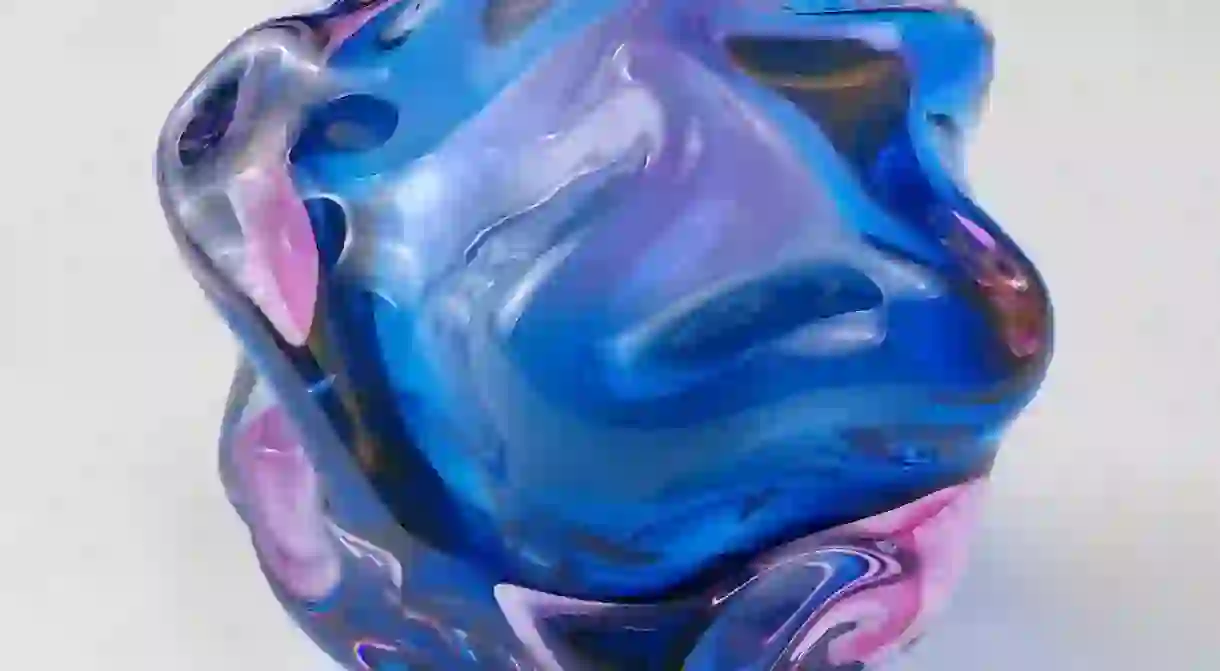From The Macro To The Micro, Lebanese Artist Flavie Audi Talks About Her Glass Sculptures

London-based Lebanese artist Flavie Audi works with glass to create extraordinary sculptures where nature and artifice collide. Culture Trip’s Art & Design Editor Freire Barnes caught up with the French-born artist to talk about her first London show.
From the mystery of the universe and galactic cosmoses to digital technologies and virtual existences, Flavie Audi’s beautiful multi-media creations confront how natural materials are used to create electronic products and precipitate artificial realms. The Royal College of Art graduate employs dynamic techniques – from vacuuming instead of blowing to mould glass and adding components like precious metals – to modify glass into exceptional 2D and 3D forms. For her first London show, Cell-(estial), Audi emphasises how organic matter can be manipulated to phenomenal effects.

Culture Trip: Can you tell us what your current London show, Cell-(estial), is about?
Flavie Audi: Cell-(estial) suggests the ambiguity between macro and micro worlds, the biological cells and the outer space beyond the earth’s atmosphere. It also refers to the realm of cellular and digital devices.

CT: The works in the show merge the chaos, the order of nature and the synthetic. How did you approach the presentation of your work in a gallery to illustrate this?
FA: In the future it will be very confusing to distinguish the virtual from the real world. I wanted to use the architecture of the space to express this dichotomy. One room is about the natural chaos while the other room enhances the man-made order of the digital. Two wall installations, Cloudscape 7 and Cloudscape 8,counter each other. One is about a cosmic explosion while the other follows the rule of the Euclidian perspective, which is the intrinsic rule that enables any digital software to navigate in a 3D space.

CT: Why do you work with glass to question these phenomena?
FA: It was important for me to start with glass as my point of departure. Glass plays a crucial part in contemplating a utopian future world where humans create cosmic fragments and new types of landscape formations. Geology and gemology are in complete symbiosis in this future ecosphere.

CT: Can you explain what’s happening in Gemscape?
FA: Gemscape is a wall-mounted sculpture that brings together synthetic and natural materials. In an era of technological innovation that has seen the creation of flawless, synthetic diamonds, undetectable by man or machine, the work questions the eclipse of ‘real’.

CT: You seem to use glass as a prism to question new technologies and screen-based realities. Do you think contemporary society has a predilection for virtual existence?
FA: It will be hard to distinguish synthetic to natural and virtual to real. The works presented in the show are investigating the points at which these worlds meet. New forms of geologies and landscapes will contribute to this ambiguity.

CT: Why do you mix up traditional glassblowing techniques with digital methods in your sculptures?
FA: I am interested in creating confusion and ambiguity between synthetic and authentic, virtual and real. It is crucial today to revive craft techniques and to use your hands, and to combine these with the latest technologies. I am not against technology.

CT: How much of a role does chance play in your work?
FA: The notion of alchemy and chance is very important. I like to let the material take its own course.
CT: You studied at the Architectural Association School of Architecture before the RCA. Did your time at this influential architecture school inspire how you work today?
FA: It totally influenced my methods of working. The AA is all about experimentation and this is something that I constantly push in my practice.
Flavie Audi: Cell-(estial) is at Tristan Hoare, 6 Fitzroy Square, London, W1T 5HJ until January 10.













